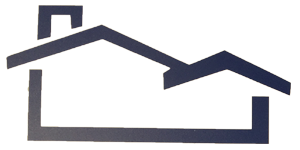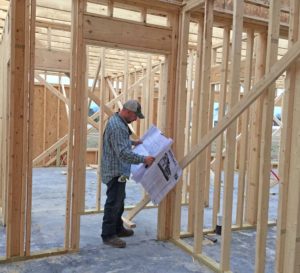Pre-Finished vs. Unfinished Hardwood Floors
Let’s talk Pre-finished
 Pre-finished can be quickly installed and provides the convenience of no sanding or finishing on site. The multiple coats of finish applied at the factory give pre-finished wood flooring a very durable wear layer and the finish itself is under warranty by the manufacturer. This durability makes it a good choice for high traffic areas such as kitchens or moisture areas such as baths. Since applied in a controlled environment the finish is usually flawless. Pre-finished floors can be installed over a wide range of sub floors but are not as forgiving if uneven. Certain engineered products can be installed over concrete. The engineered finish makes the floor more resistant to moisture and humidity and for humid climates like ours in eastern North Carolina that’s important. Pre-finished hardwood floors have a beveled edge that accumulates dust and dirt in the cracks between the boards. This makes it more difficult to keep clean. If damage occurs it usually requires pulling up sections and is more involved to correct than just sanding and finishing the unfinished floor. During installation it is necessary to top nail the boards along the perimeter, near walls or cabinets to start the floor and in pre-finished flooring these holes are filled and may be more visible than in the sanded finished on site flooring.
Pre-finished can be quickly installed and provides the convenience of no sanding or finishing on site. The multiple coats of finish applied at the factory give pre-finished wood flooring a very durable wear layer and the finish itself is under warranty by the manufacturer. This durability makes it a good choice for high traffic areas such as kitchens or moisture areas such as baths. Since applied in a controlled environment the finish is usually flawless. Pre-finished floors can be installed over a wide range of sub floors but are not as forgiving if uneven. Certain engineered products can be installed over concrete. The engineered finish makes the floor more resistant to moisture and humidity and for humid climates like ours in eastern North Carolina that’s important. Pre-finished hardwood floors have a beveled edge that accumulates dust and dirt in the cracks between the boards. This makes it more difficult to keep clean. If damage occurs it usually requires pulling up sections and is more involved to correct than just sanding and finishing the unfinished floor. During installation it is necessary to top nail the boards along the perimeter, near walls or cabinets to start the floor and in pre-finished flooring these holes are filled and may be more visible than in the sanded finished on site flooring.
How about Unfinished Wood Floors…
 On average the wood tends to be cheaper but the overall complexity of the installation causes this to be the more expensive option. It comes in a variety of widths. If trying to match an existing floor then unfinished may be the way to go since more options are available and your installer can more easily match the existing floor. Unfinished floors are easier to refinish when the time comes since they do not have the thicker surface seal. Finishes applied after installation to unfinished floors penetrate not only the top but also the sides of each plank and this leaves fewer places where dirt and water can gather in the seam. The dust, mess and fumes from the sanding and finishing process alone prevent some homeowners from choosing unfinished floors for remodeling although new dust accumulation methods greatly reduce this nuisance but are more costly. In new construction the smell and mess factor is not as important but the time of installation and finishing becomes a factor (usually one to two weeks). In the picture you can see the flexibility unfinished offers as far as design. Unfinished flooring is more forgiving of slight irregularities or height in the sub floor and a custom finished wood floor is usually perfectly flat looking.
On average the wood tends to be cheaper but the overall complexity of the installation causes this to be the more expensive option. It comes in a variety of widths. If trying to match an existing floor then unfinished may be the way to go since more options are available and your installer can more easily match the existing floor. Unfinished floors are easier to refinish when the time comes since they do not have the thicker surface seal. Finishes applied after installation to unfinished floors penetrate not only the top but also the sides of each plank and this leaves fewer places where dirt and water can gather in the seam. The dust, mess and fumes from the sanding and finishing process alone prevent some homeowners from choosing unfinished floors for remodeling although new dust accumulation methods greatly reduce this nuisance but are more costly. In new construction the smell and mess factor is not as important but the time of installation and finishing becomes a factor (usually one to two weeks). In the picture you can see the flexibility unfinished offers as far as design. Unfinished flooring is more forgiving of slight irregularities or height in the sub floor and a custom finished wood floor is usually perfectly flat looking.
When I am installing either type of floor I make sure the product is ordered and delivered so that the it can be placed in the home for at least 24 hours before the installation. This allows the product to acclimate to the specific moisture and humidity in the home. If you are interested in high quality and good value then give me a call to discuss hardwoods for that new home construction or remodeling job you’ve been thinking about.
Tags: Pre-finished hardwood floor, Unfinished hardwood floor




